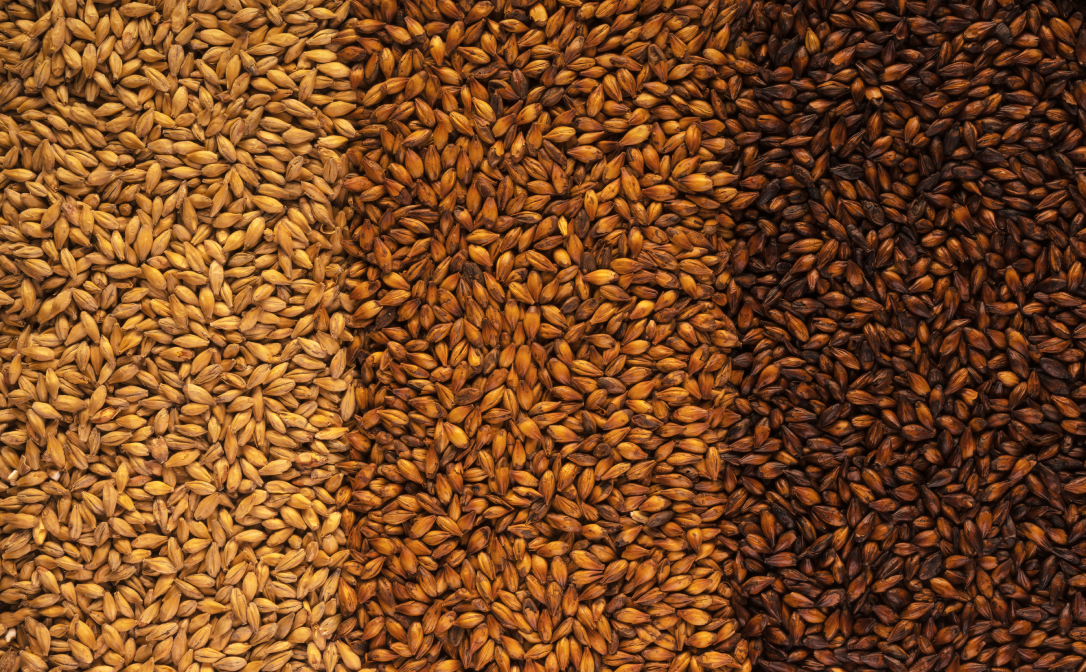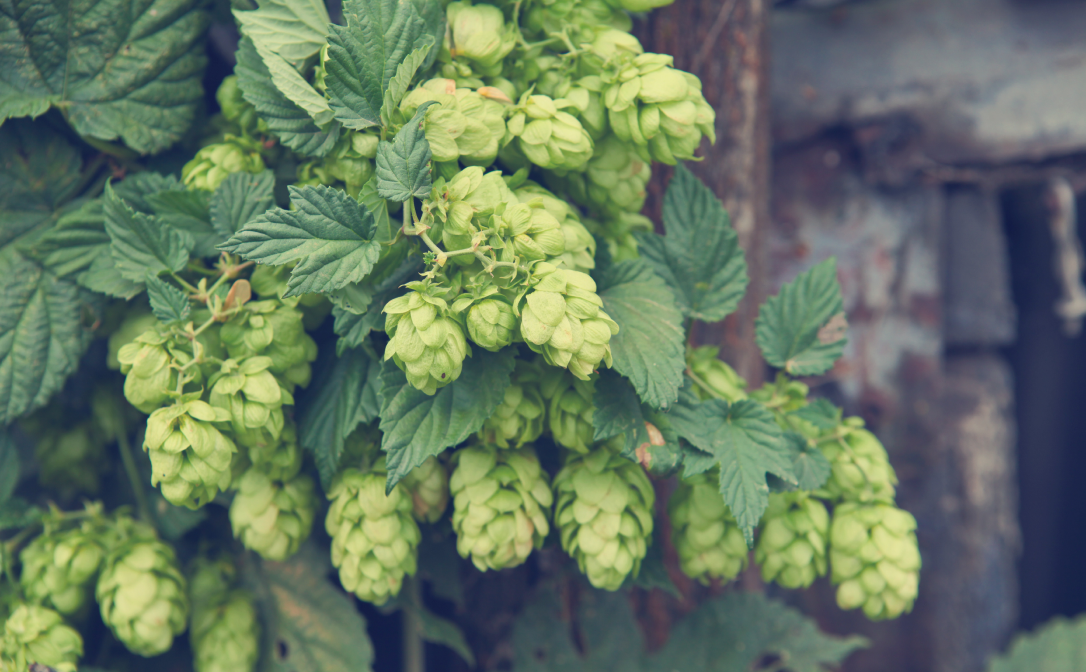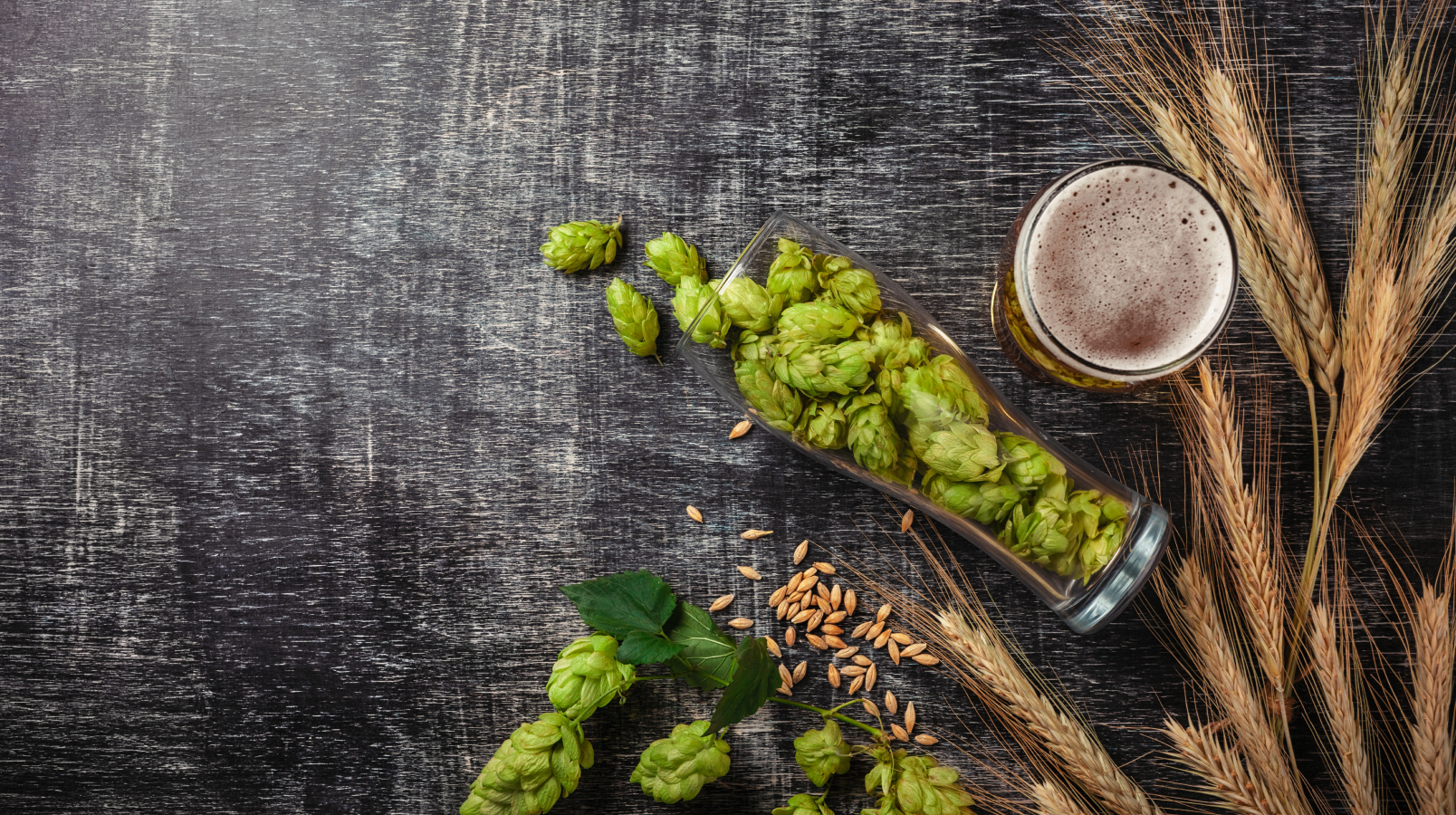Beer is a fascinating, diverse and delicious beverage with plenty of styles to explore – from clear, gold pilsners to opaque, black stouts.
Despite these styles having different colours, aromas and flavours, there are four key ingredients that nearly all beers have in common. What are they and how do they influence beer’s flavour profile?
Interested in learning more about beer? Take a look at our new beer qualifications, coming soon!
What is beer and what is it made from?
Beer is a fermented alcoholic beverage typically made using malt (malted grains), water, yeast, and hops.
During fermentation, yeast consumes the sugars provided by the malted grains and produces alcohol and carbon dioxide gas.
Yeast, along with malt and hops, can introduce an incredible range of aromas and flavours to beer, as well. Hence why, depending on the ingredients and brewing processes used, beer can have totally different flavour profiles. Its colour and strength can vary, too.
And it’s these sets of characteristics – a specific colour, strength and flavour profile – that define a particular beer style! But we’ll delve into more detail on that in our next beer-focused blog post.
For now, let’s take a closer look at each ingredient and its role in the brew.
Malt
Malt, shorthand for malted grains, is simply any grain that has gone through the malting process. In brewing, barley is the most commonly malted grain. But grains like wheat, maize (corn), oats, rye, and rice can also be used in beer.

Malted barley
The malting process enables the malt to act as a source of sugar for the yeast. It also gives malt – and therefore beer – much of its colour and a range of aromas and flavours, too.
Different colours and flavours can be created by varying the temperature used and the length of time the grains are heated during the final step of the malting process, called kilning.
Base malts are heated to the lowest temperatures in the kiln. They can give beer notes of water cracker, bread dough, bread crumb or light honey. And, if used on their own, base malts give a beer a straw or gold colour.
Specialty malts are produced by increasing the temperature or length of time the malt spends in the kiln (compared to base malts) or by roasting malt at even higher temperatures. They are most often used in small amounts, in combination with base malts, to give colour and flavour to the final beer. Specialty malts can introduce a wide range of aroma and flavour characteristics such as digestive biscuit/graham cracker, bread crust, toasted bread, toasted nut, caramel, dried fruits, candy floss (cotton candy), coffee and chocolate and they can give a beer an amber, copper, brown or even black colour.
Bringing back the styles we mentioned earlier, a gold-coloured pilsner will be made with all base malts, while an opaque black stout will be made with added specialty malts.
Water
In terms of volume, water is the main ingredient in beer. It provides the liquid environment in which yeast can consume sugars and turn them into alcohol.
Water can influence beer’s flavour based on the minerals it contains, but that’s not something we’ll go into further detail on here.
Hops
Hops, the cone from the hop plant, were initially used in brewing primarily for their antibacterial properties, helping to preserve the beer. These days though, hops are more prized for the bitterness, aromas and flavours they bring to beer.

Hops cones on a hop bine
There are hundreds of varieties of hop, each with their own characteristics – different aromas and flavours, flavour intensity and levels of bitterness. Additionally, each variety achieves its ideal characteristics in places with the right climate. For example, traditional German, Czech or British hops tend to produce subtle spicy, floral, herbal, earthy or fruity notes, while American, New Zealand or Australian hops contribute intense citrus fruit, stone fruit, tropical fruit or pine character.
Depending on the level of bitterness and types of aromas and flavours they want to achieve in the final beer, brewers can choose to use a single hop variety or a blend of varieties.
Lastly, it’s important to note that while hops are the most widely used flavouring ingredient added to beer, other flavourings – like fruits, herbs and spices – can be used as well.
Yeast
Yeast is a tiny microorganism that creates the alcohol and carbonation found in beer, and it can also give beer some of its aromas and flavours.
There are two main species of yeast used in brewing – ale yeast and lager yeast. These species behave differently and, as a result, they are responsible for one of the principal divisions that is found in beer styles: ales and lagers.
Ale yeast can produce a wide range of fruity and spicy aromas and flavours. There are many different strains of ale yeast and each strain creates its own signature flavour profile. As a result, individual yeast strains can be chosen to create particular styles of beer, as you’ll see in our next blog post.
Compared to ale yeast, there are fewer strains of lager yeast and lager yeast strains generally do not contribute as much flavour to the final beer.
As well as these two species of yeast, other types of yeast and even bacteria can also be used to make certain styles of beer.
What’s next?
Now that you know more about what beer is made from and the different aromas and flavours that each ingredient can introduce, hopefully you can start to see that by selecting different ingredients or brewing techniques, a brewer can create totally different flavour profiles and, therefore, totally different styles of beer.
And that’s exactly what we’ll explore in our next blog post – an introduction to some of today’s best-known beer styles and how they’re made.
Check back soon!
This blog post was written by Natalya Watson, Business Development Manager – Beer (EMEA). Natalya is an award-winning beer educator passionate about sharing her knowledge of beer with others because she believes that beer is simply too delicious to remain undiscovered. Natalya is qualified as an IBD Beer Sommelier, Advanced Cicerone® and WSET beer educator and has her WSET Level 2 Award in Beer. She is also the author of Beer: Taste the Evolution in 50 Styles. Follow Natalya on Instagram here.


